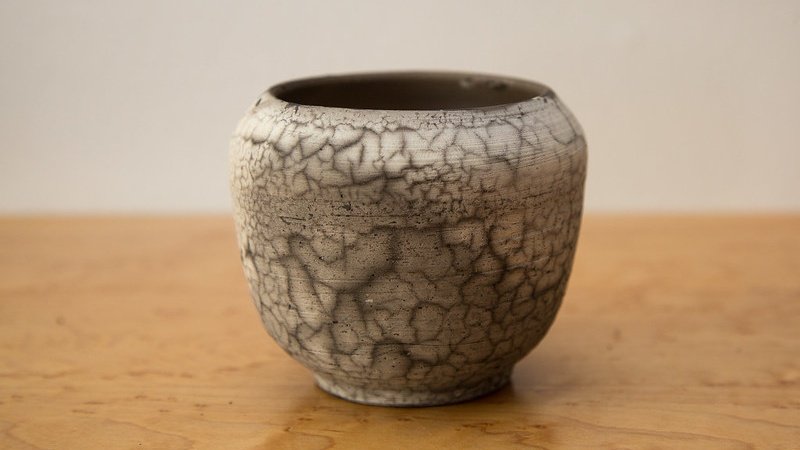What Is Raku Pottery? Complete guide to raku pottery
Traditional Japanese form of ceramics, rakuware (楽焼, raku-yaki) is a famous type of pottery, loved and admired by many not only in Japan but in all corners of the world. Originally created for the tea ceremony, Raku ware is most commonly found in the form of tea bowls.
Nowadays, Raku pottery is versatile and used for many decorative and practical pieces. But what exactly is Raku potter?
Raku generally refers to a kind of low-firing process that was inspired by traditional Japanese raku firing. Western-style raku usually involves removing pottery from the kiln while at bright red heat. The drastic thermal shock creates a beautiful texture and color and also causes characteristic cracking.
If raku pottery seems as astonishing to you as it seems to me, you have come to the right place. In this article, I will give a guide on raku pottery. I will cover several important topics, including methods to distinguish raku pottery from other forms; the difference between raku pottery and many other types of pottery. Lastly, I will speak about the sealing process, which will help you to maintain the beauty of raku items.
How can You Tell if Pottery is Raku?
The capability to identify the type of pottery requires many years of study, and in the beginning, it is easy to make mistakes. Yet, Raku is so outstanding and special that recognizing it among many other types of pottery won’t be a challenge for a person with basic knowledge about pottery.
The most apparent difference is Raku pieces are made using a very special technique, involving low-temperature firing instead of being fired in a kiln at up to 1,000 degrees Celsius (1,832 degrees Fahrenheit).
In addition to this, many Raku items feature contrasting glazes on their exteriors and interiors because the final high-temperature firing happens after the piece has almost finished cooling.
However, Raku items may be modern or traditional. If you are looking for traditional pieces then there is one important thing you should pay attention to. Traditional Raku pieces have special stamps on the ceramics and the storage boxes. Some artists do not use stamps, but instead, they put their signatures on stamps.
>> Related: How to find out who made pottery? Quick guide for beginners.
If you are planning to buy a ceramic piece through an online store or seller, then the requirement is that in addition to fine pictures of the item, you need a sharp, good quality picture of the ceramic stamp and of the box-stamp with its text. If you do not have it, then you must request it. Do not let stress cause a bad purchase!
How is Raku Pottery Different?
The first thing we should talk about when discussing the difference between Raku and other forms of pottery is clay.
Most artists use special raku clay, but any kind of clay work for raku pottery. However, special raku clay creates the best results. Raku clay has generally high thermal shock resistance and low shrinkage. Another significant aspect in the creation of your raku firing is choosing the right type of glaze, a glaze whose characteristics react in the best way in a raku firing.
Another important aspect that makes raku so different is its unique firing technique. The fast-firing process takes place usually in the space of 60 to 80 minutes. The clay is heated quickly. Secondly, the clay is removed from the kiln, often when it is red hot.
>> Related: Can You Use Human Hair for Raku Pottery? (Important Facts)
Raku pottery cooling methods are also very unique. Traditionally, Japanese masters used to take the raku piece from the kiln when it was still extremely hot and let it air-dry. The results of that method can be stunning. You might see crackled glaze surfaces or stunning metallic effects.
As air-drying requires a long time, contemporary methods have evolved. With modern techniques, they will submerge the pottery in cold water. This can lead to thermal shock happening more commonly. It doesn’t follow traditional techniques and is more of a modern cooling process.
Where can I Find a Reference to Japanese Raku Pottery Seals?
Raku pottery is beautiful and charming. But it is very fragile and porous. Generally, raku items are not waterproof, which drastically limits their versatility and practicality.
But, fortunately, there are ways to make raku items water-resistant. Sealing is one of those methods. But why do you need to seal raku items?
Because raku is fired for a shorter period at a lower temperature, the ceramics and glaze do not have enough time to fully mature. The clay is still porous. This means it absorbs liquid and it is not especially strong or durable. As a result, raku pottery is unsuitable for being a water-holding vessel like a vase.
One method to stop this is to put a sealant on top of the glaze. Some potters recommend using a brick or concrete sealant. These are designed to create a barrier between brick walls and the damp. But because they deter water penetration, they also produce an effective barrier to oxygen.








